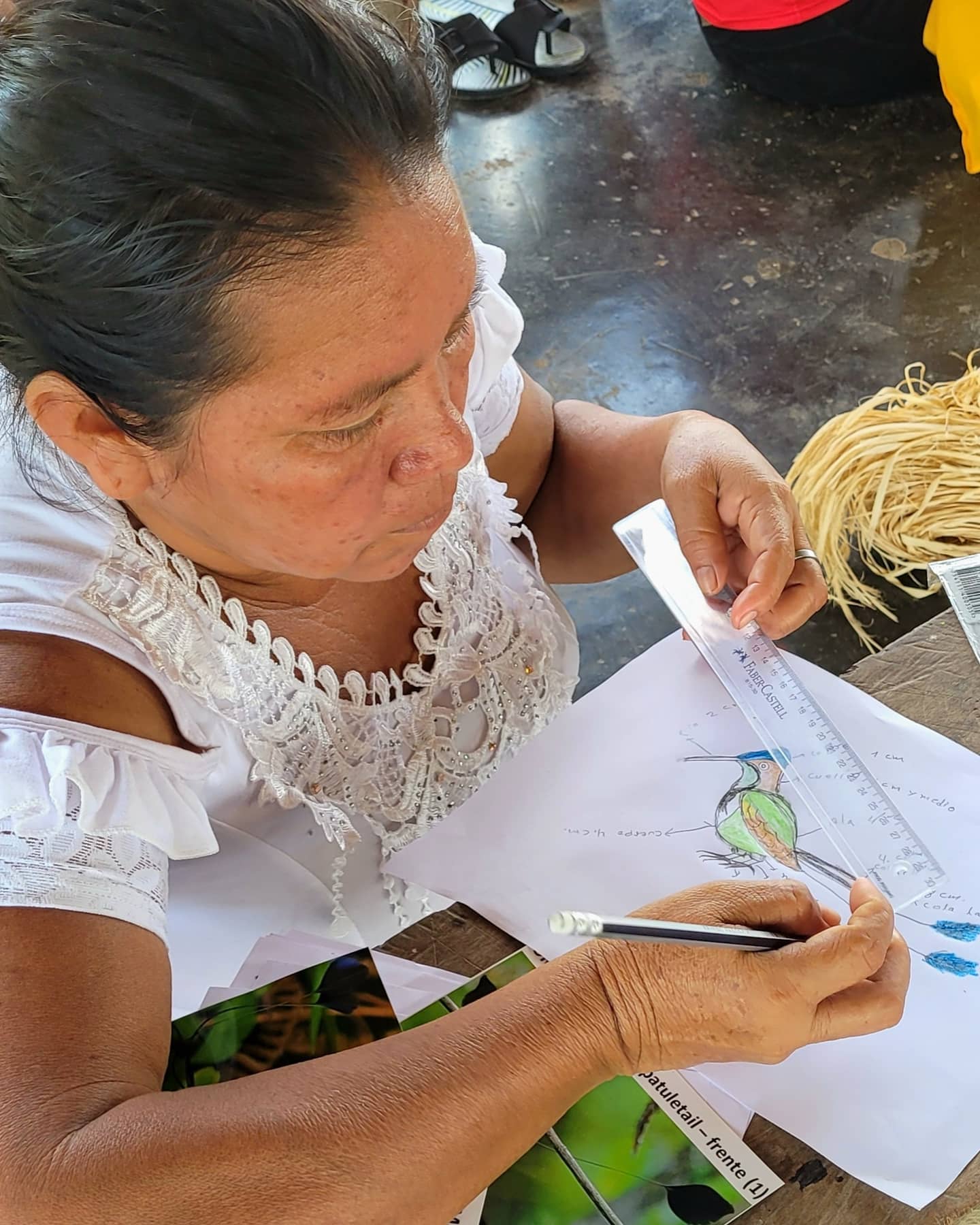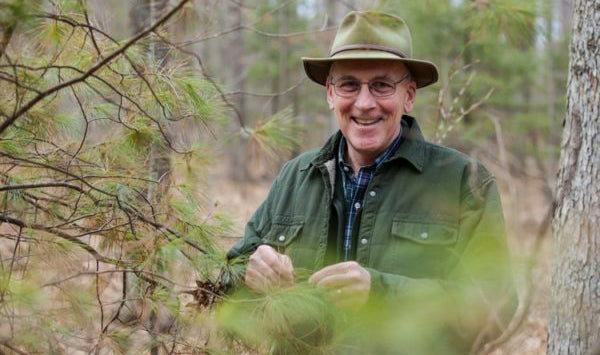February 18, 2022
On the first day of Amazon Ecology's Artisan Facilitator Training workshop in Amazonas village, we gave each person a set of designs that showed different parts of a bird. One sheet gave an overview of the whole body while others showed the different types of beaks, wings and tails.
The artisans were certainly familiar with such differences, but since they often made generic looking bird ornaments in the past, we wanted their new woven birds to reflect the features of the species they were making.
We divided the 30 participants into 4 small groups and gave each group photos of a different bird. These included the chestnut-eared aracari, a great blue heron, a marvelous spatule-tail hummingbird and a cardinal.
We then asked each person to draw a profile of their bird that they could use as a guide for the model they would weave next. It would ideally be drawn so they would know the shape and size of each part of the bird. They would next analyze the colors of the bird in the photo and decide what color or combination of colors they would use to make each part.
This was not an easy task. Many drawings were too small to be useful. A few drawings were beautiful but had more detail in the drawing than could be replicated with the fiber.
After several tries, each group chose one drawing to guide their group. They then presented their work plan to the whole group to practice an introduction they would make to a group of artisans meeting in a workshop to learn how to weave a bird ornament.

Artisans examine illustration of the parts of a bird

Artisan makes a drawing of a northern cardinal

Artisans choose drawing to be template for woven bird

Artisan group presents design and fiber colors for weaving cardinal ornament




